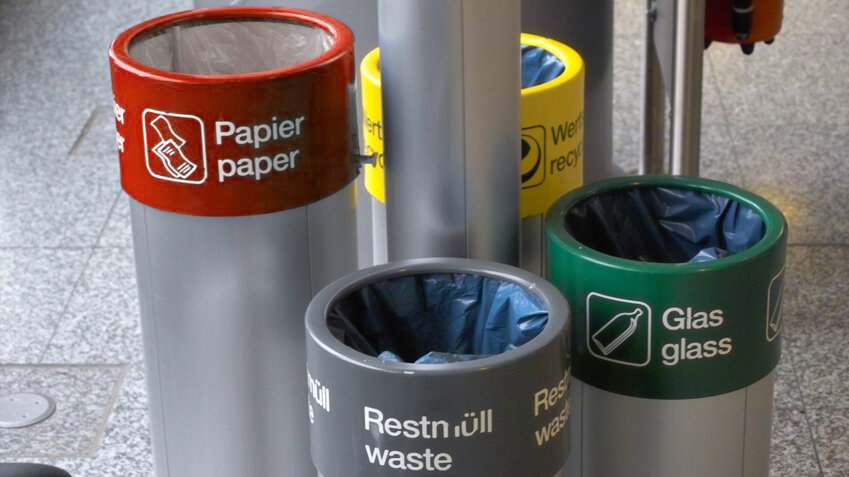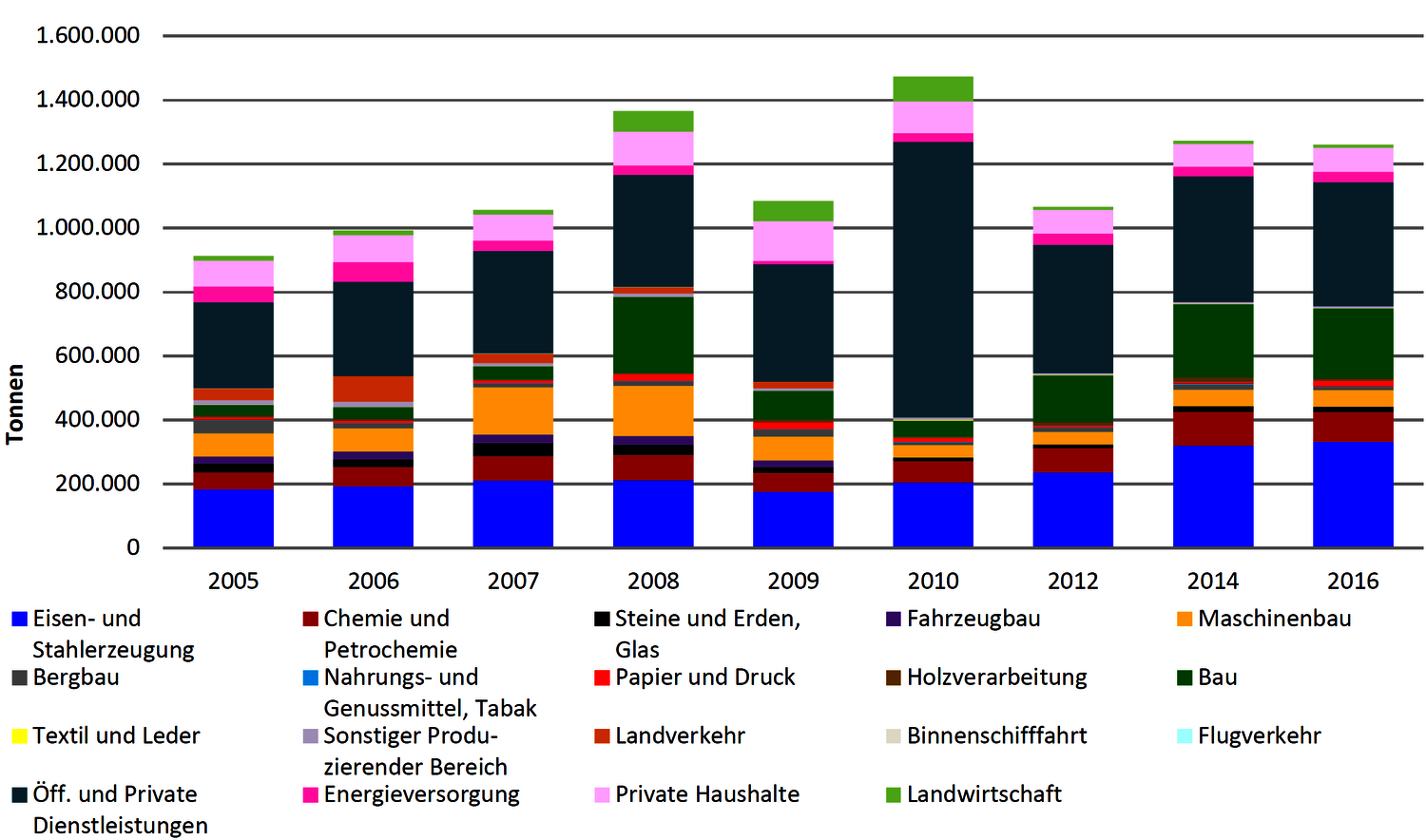Waste
Wastes are, by definition, “moveable goods which the owner or holder wishes to discard or has discarded; or moveable goods whose collection and treatment as waste are in the public interest”. Waste data is presented separately for hazardous and non-hazardous waste.

A comparative analysis of hazardous waste within the framework of the environmental accounts or the Integrated NAMEA is not possible. On the one hand, this is due to the different subdivision into the individual economic sectors for the years 1998 to 2004 compared to the other modules and, on the other hand, to changed legal regulations regarding the determination and classification of hazardous waste. The consequences are breaks in the time series and the fact that waste data is considered independently due to the different classification and is not directly compared with the other developments at the level of the economic sectors.
The figure below shows the generation of hazardous waste for the years 2005 to 2016 in the structure of the Integrated NAMEA. From 2010 onwards, the data are only available for even years, as they only have to be collected every two years according to the EC Waste Statistics Ordinance.
The largest amounts of hazardous waste are produced in the public and private services sectors, followed by iron and steel production, the construction industry, chemicals and petrochemicals and private households.

